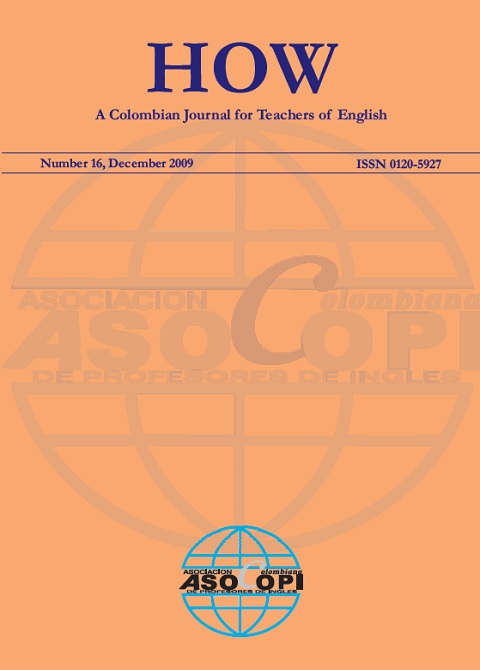Reading beyond the Classroom: The Effects of Extensive Reading at USTA, Tunja
Main Article Content
Abstract
The purpose of this study was to observe and describe the effects of applying extensive reading to a group of fifth level English students at Universidad Santo Tomás de Aquino and be accepted into the English Program. This project provided a confidential atmosphere for students to develop extensive reading practice based on different texts; it was characterized by students’ free and controlled reading in which they had the opportunity to make their own choices under the supervision of the teacher. Data were gathered through teachers’ journals, students’ oral reports and interviews given to them; in this way the categories which emerged were extensive reading contributions in the process of second language acquisition, extensive reading as motivation in the reading practice, and the importance of including extensive reading in the English program.
Article Details

This work is licensed under a Creative Commons Attribution-NonCommercial-NoDerivatives 4.0 International License.
The authors of the manuscripts accepted for publication in HOW journal are required to sign a nonexclusive license agreement allowing ASOCOPI to reproduce the full text on the Internet or in any other available source. Authors retain copyright of their manuscripts with the following restrictions: first publication is granted to ASOCOPI; nonexclusive agreements with third parties can be established as long as the original publication in the HOW journal is properly acknowledged.
References
Bandler, R. & Grindler, J. (1979). Frogs into princes: Neuro-linguistic programming. Boulder, CO: Real People Press.
Bell, T. (2007). Intensive versus extensive reading: A study of the use of graded readers as supplementary input material to traditional “Intensive” reading techniques. Unpublished MA TEFL Dissertations. University of Reading.
Cohen, D. & Crabtree, B. (2006). Qualitative Research Guidelines Project. Retrieved from: http://www.qualres.org/HomeSemi-3629.html
Davis, C. (1995). Extensive Reading: An expensive extravagance? English Language Teaching Journal, 49(4), pp. 329-336.
Day, R.R. & Bamford, J. (1998). Extensive reading in the second language classroom. New York: Cambridge University Press.
Dubravcic, J. (1996). Telling the truth about extensive reading. The Language Teacher, 20(12), p. 52.
Ellis, R. (1987). Second language acquisition in context. New York: Prentice Hall.
Elley, W. B., & Mangubhai, F. (1983). The effect of reading on second language learning. Reading Research Quarterly, 19(1), pp. 53-67.
Green, C. (2005). Integrating extensive reading in the task-based curriculum. ELT Journal, 59(4), pp. 306-311.
Hill, J. & Lewis, M. (Eds.) (1997). Dictionary of selected collocations. England: Language Teaching Publications.
Merriam, S. (1988). Case study research in education: A qualitative approach. San Francisco, CA: Jossey–Bass.
Nagy, W.E. & Herman, P. (1987). Breadth and depth of vocabulary knowledge: Implications for acquisition and instruction. In Mckeown, M. & Curtis, M. (Eds), The nature of vocabulary acquisition. (pp. 19-35) Hillsdale, NJ: Lawrence Erlbaum Associates.
Nunan, D. (1992). Research methods in language learning. Cambridge: Cambridge University Press.
Robb, T. N. & Susser, B. (1989a). Extensive reading vs. skills building in an EFL context. Reading in a Foreign Language, 5(2), pp. 239-251.
Robb, T.N. & Susser, B. (1989b). Developing extensive reading. JALT Newsletter, 6(1), pp. 1-5.
Thompson, C. (1983) Intensive and extensive reading - A summary, for practicing teachers, of material presented by Damien Tunnacliffe at JALT '83. The Language Teacher, 8(4), 21-22.
Tsang, Wai-King. (1996). Comparing the effects of reading and writing on writing performance. Applied Linguistics, 17(2), pp. 210-223.

